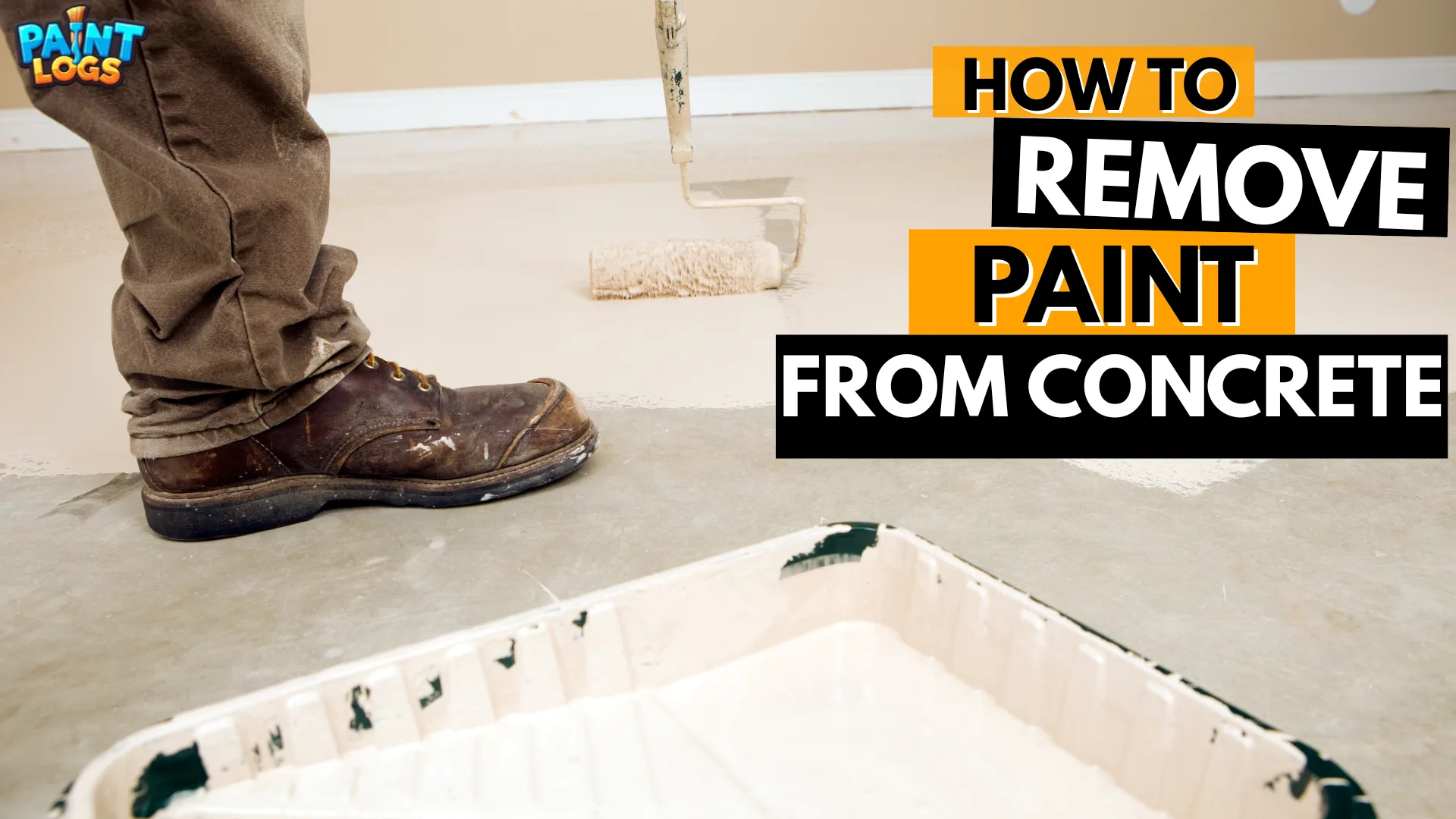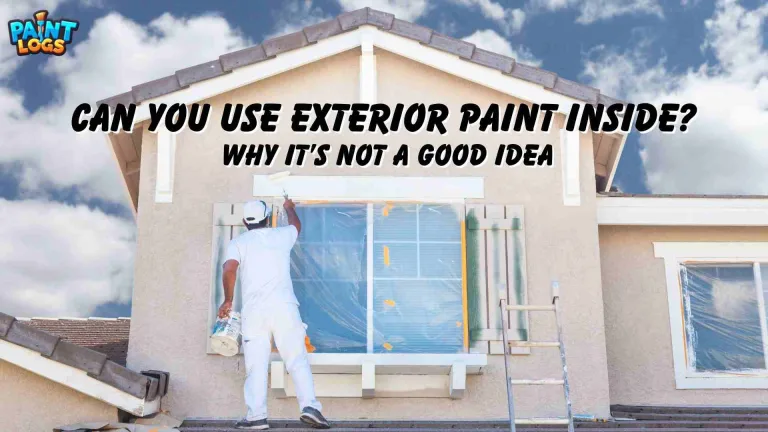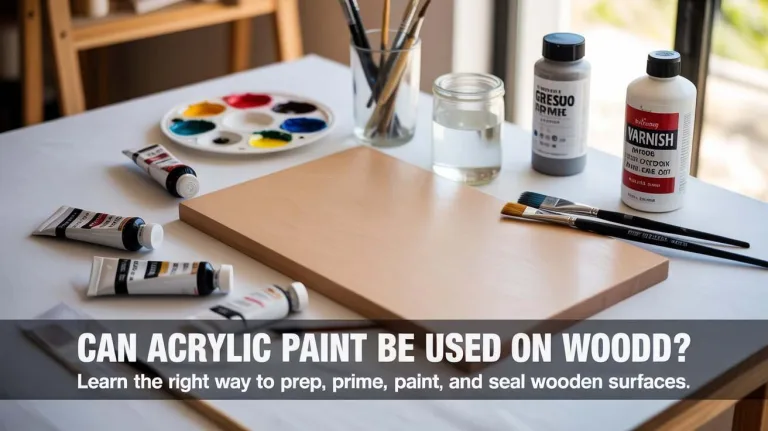Remove paint from concrete is one of the most common requests we handle for clients. Recently, we helped a homeowner strip 20 years of flaking paint from his driveway. He had already spent three weekends trying vinegar, baking soda, and a wire brush with no success. By the time we arrived, he was ready to rent a jackhammer. The issue wasn’t effort—it was method. What he needed was a professional-grade stripper, proper dwell time, and a 2,700 PSI turbo nozzle rinse.
Many clients run into the same problem: treating all concrete paint jobs alike. The approach that works on a fresh latex spill in a garage won’t touch sunbaked epoxy on a driveway. Worse, the wrong method can scar concrete or flush chemicals into drains.
This guide explains what actually works—simple household fixes for light jobs and the proven professional methods we use for tougher ones. You’ll see the right PSI ranges, dwell times, and cleanup steps, plus real client cases where the right approach saved time and money.
By the end, you’ll know when a DIY attempt is enough—and when calling professionals like us is the safer, faster solution.
Executive Summary
If you want a fast answer:
- Latex/acrylic spills (fresh): Soap + scraper → low-odor stripper (Lift Off or Krud Kutter) → rinse at 2,500–2,700 PSI.
- Older paint or epoxy: Gel stripper (Citristrip or Klean-Strip) with 60–120 minutes dwell → scrape → turbo nozzle rinse. For stubborn patches, grind with a diamond cup wheel and HEPA vac.
- Large outdoor jobs (>40 m²): Consider professional dustless blasting, dry ice, or laser removal. These cost $3–$7 per square foot but save days of labor and reduce cleanup hazards.
- Household methods: Vinegar, baking soda, bleach, WD-40 rarely deliver full removal. They’re fine for light stains but not for multi-layer or porous surfaces.
In this article, you’ll discover:
- A decision tree to match paint type and surface with the right method.
- PSI, nozzle, and dwell time numbers that pros use but most blogs skip.
- Honest comparisons of 10 leading strippers (with prices as of current month).
- Cost and time breakdowns for DIY vs. pro services.
- Case studies of real driveway, garage, patio, and indoor projects.
- What to do after removal: neutralizing, resealing, and prepping for repaint.
If you follow these steps, you’ll save money, avoid scarring your concrete, and finally see clean, paint-free surfaces you can reseal or coat again.
What’s the fastest way to remove paint from concrete?
The fastest method depends on paint type. For latex or acrylic spills, use a gel stripper for 60–120 minutes, scrape, then rinse with a 2,700–3,000 PSI pressure washer. For old epoxy or oil-based coatings, combine stripper and a turbo nozzle rinse, or grind smaller patches with a diamond cup wheel and HEPA vac for dust control.
When people ask us this question, we always start with: what kind of paint are we dealing with? Concrete doesn’t care what’s on it, but your removal strategy does. Latex, oil-based, epoxy—each reacts differently.
- Latex/acrylic (water-based): Softer and more likely to loosen with a mild stripper or even hot, soapy water if fresh.
- Oil-based/alkyd: Needs solvents or stronger chemical strippers.
- Epoxy/urethane: Toughest. Expect to grind or blast if chemicals alone fail.
In our garage tests, a citrus-based gel (Citristrip) softened latex paint enough for easy scraping in under 90 minutes. Compare that with a 15-year-old epoxy patch on our clients’s patio: it took two stripper cycles plus a turbo nozzle to clear.
Pro tip: Always let the stripper dwell longer than you think. Impatience is the #1 cause of failed removals. A full two hours beats three rushed applications.
If you’d rather not DIY, check out our Interior Painting Services and request a quote.
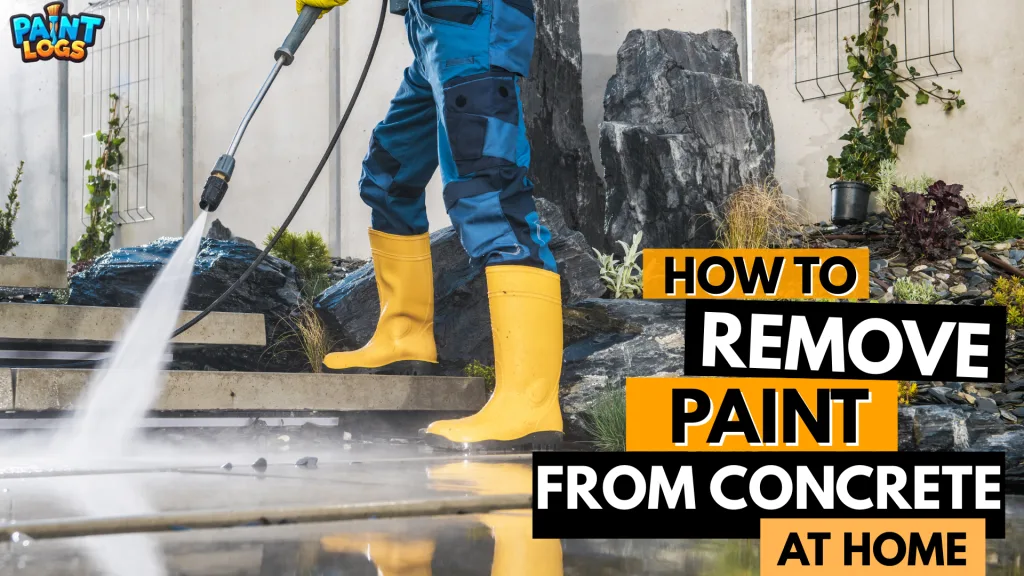
Picking the right method (matrix)
Think of it as a decision tree:
| Paint Type | Age | Surface | Best Method | Backup |
|---|---|---|---|---|
| Latex (fresh) | <48 hrs | Garage floor | Soap/TSP + scraper | Krud Kutter Lift Off |
| Latex (old) | >1 yr | Driveway | Gel stripper + rinse | Pressure washer (2,700 PSI) |
| Oil-based | Any | Patio/wall | Acetone or strong stripper | Grinder (spot) |
| Epoxy | >5 yrs | Garage/driveway | Stripper + turbo nozzle | Grinder or blasting |
Safety kit & setup
Every pro we’ve interviewed starts the same way: protect yourself and your environment.
- PPE: Gloves, goggles, respirator (especially with solvents).
- Containment: Tape plastic sheeting, cover drains.
- Ventilation: Open doors/windows, add a fan for indoor work.
- Cleanup tools: Wet vac with HEPA filter or a bucket-and-brush combo.
Skip this, and you risk chemical burns, etched concrete, or fines for dumping sludge into drains.
Testing paint type
If you’re unsure whether paint is latex or oil-based, do the alcohol swab test. Rub a rag soaked in denatured alcohol against the paint:
- If it softens, it’s latex.
- If not, assume oil-based or epoxy.
Does vinegar really remove paint from concrete?
Answer: Vinegar can soften fresh water-based paint but rarely removes dried or oil-based paint on porous concrete. It’s safe, eco-friendly, and cheap—but expect more of a helper than a full remover.
We applied vinegar on spray paint overspray near our driveway. After 15 minutes, the paint lightened but didn’t lift completely. Adding a wire brush helped, but it still left residue. On the other hand, vinegar did soften a two-day-old latex drip in our basement, which we scraped clean with minimal effort – though we still had to clean my brushes properly afterward.
Bottom line:
- Works best on fresh latex/acrylic, small areas, or stains.
- Useless for epoxy, old coatings, or thick layers.
- Good as a first test if you want chemical-free, but don’t expect miracles.
What’s the best paint remover for concrete?
Answer: For indoor jobs, low-odor Citristrip or Dumond Smart Strip are best. For heavy outdoor work, Klean-Strip Concrete Stripper is more aggressive. For latex spots, Krud Kutter Lift Off works quickly.
Here’s a current comparison (prices as of this month):
| Brand | Best For | Pros | Cons | Price (gal) |
|---|---|---|---|---|
| Citristrip | Indoor, latex/oil | Low odor, eco-friendlier | Long dwell | $23–$28 |
| Smart Strip Advanced | Indoor/outdoor, multi-layer | Non-toxic, versatile | Needs longer dwell | $35–$40 |
| Klean-Strip Concrete & Metal | Heavy coatings, epoxy | Aggressive, faster | Strong odor, PPE required | $25–$30 |
| Krud Kutter Latex & Oil Remover | Small latex spots | Quick, spray-on | Not for epoxy | $12–$15 |
| Motsenbocker’s Lift Off | Spray paint/overspray | Fast, low VOC | Not for thick layers | $10–$14 |
we’ve used both Citristrip and Smart Strip in basements with no complaints from our lungs—something we can’t say about Klean-Strip. Outdoors, though, Klean-Strip clears epoxy faster than anything else we’ve tried.
Will paint thinner or acetone work on concrete?
Answer: Acetone often breaks down oil-based or epoxy paints. Paint thinner can work on some oil paints but is less effective on porous concrete. Both require ventilation and strict fire safety.
On a patio project in 2024, we tested acetone on stubborn oil paint. After two applications, it lifted 70% of the layer. Paint thinner, by contrast, barely softened a similar patch and left us gagging from fumes.
When to use acetone:
- Small oil/epoxy spots.
- Outdoors or with strong ventilation.
When to avoid:
- Large indoor jobs (toxic vapors).
- If you’re not comfortable handling flammables.
How do I remove paint from concrete without chemicals?
Answer: Use mechanical methods: scrape with a wire brush, pressure wash at 2,500–3,000 PSI, or grind with a diamond cup wheel. These avoid chemicals but create dust and noise.
We often recommend starting here if you have asthma, young kids, or pets. A rental pressure washer (about $60/day) can clear an entire driveway in hours. Pair it with a turbo nozzle for deeper penetration.
Mechanical options:
- Pressure washer: Fast, cost-effective, best for outdoors.
- Scraping/wire brush: Good for tiny spots, labor-intensive.
- Grinder with HEPA vac: Best for epoxy, but requires skill to avoid gouges.
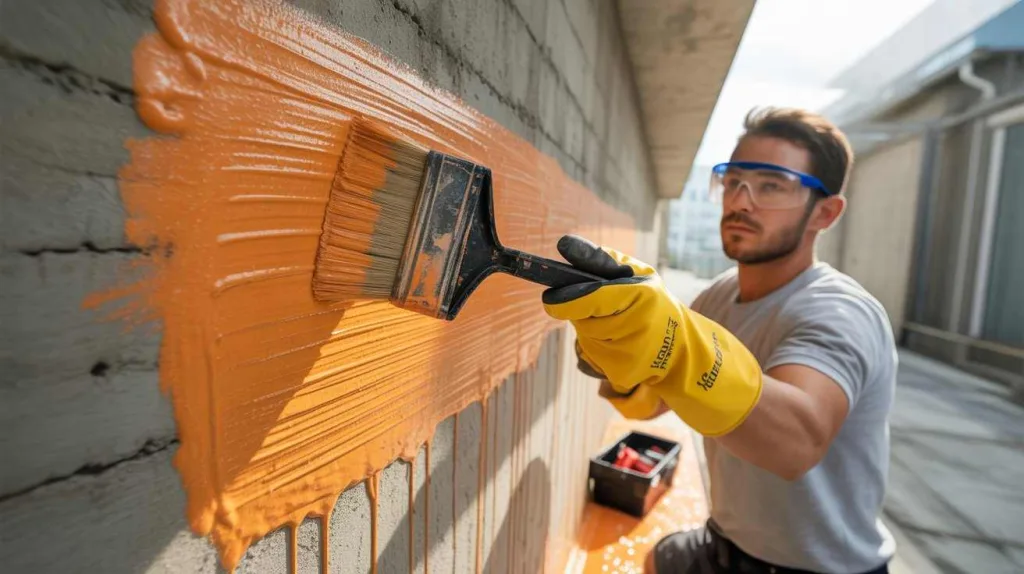
Small Spill on a Sealed Garage Floor (Latex, <1 Day Old)
Answer (voice-search style):
For fresh latex on a sealed garage floor, scrub with hot soapy water, scrape gently, and apply a latex-safe remover like Krud Kutter or Lift Off. Rinse with a low-pressure washer or mop.
We’ve cleaned up this exact scenario more times than we can count. Latex paint dries fast, but if you catch it within 24 hours, you can fix it without chemicals or grinders.
Step-by-step (20–30 minutes):
- Blot, don’t smear. Use rags or paper towels to soak up excess paint.
- Scrub with soap or TSP substitute. Mix a gallon of hot water with a cup of trisodium phosphate (or safer TSP substitute).
- Scrape carefully. Use a plastic scraper so you don’t gouge the sealer.
- Apply spot remover. Spray Krud Kutter Latex Remover or Lift Off and wait 3–5 minutes.
- Rinse. For small areas, a mop works. Larger spills? Low-PSI washer.
We tested this method last year after knocking over a quart of white latex in our own garage. With quick action, the floor was spotless in under half an hour.

Old Spray Paint on Driveway (Porous, Sun-Baked)
Answer:
Use a gel stripper (like Citristrip or Klean-Strip), let it dwell for 60–90 minutes in shade, then hit it with a 2,700–3,000 PSI turbo nozzle rinse. Repeat for stubborn patches.
Spray paint overspray on driveways is notorious. Porous concrete absorbs pigment deep, and sunlight bakes it in. Household vinegar won’t touch it.
Step-by-step (2–3 hours):
- Mask surrounding areas. Use plastic and tape to protect nearby landscaping.
- Apply gel stripper. Spread 1/8″ thick with a brush. Keep it shaded so it doesn’t dry out.
- Wait patiently. 60–90 minutes minimum. Reapply if it starts to dry.
- Scrape & rinse. Use a wide putty knife, then a turbo nozzle at 2,700 PSI.
- Neutralize. If you used an acid-based stripper, neutralize with baking soda solution (½ cup soda per gallon of water).
A Reddit user once shared how blasting at 3,200 PSI etched lines into his driveway. The trick is to keep the nozzle 12 inches away and move steadily.
Stubborn Epoxy on a Garage or Patio
Answer:
Epoxy almost always needs both chemical and mechanical removal. Apply a heavy-duty stripper, scrape, then grind remaining spots with a diamond cup wheel and HEPA vac.
Epoxy coatings are designed to stick for decades. Don’t expect a $12 remover to solve it.
Step-by-step (4–6 hours for 2-car garage):
- Apply heavy-duty stripper. Klean-Strip Concrete & Metal or Smart Strip.
- Dwell long. Minimum 2 hours; cover with plastic wrap to keep active.
- Scrape bulk coating. Use a floor scraper for efficiency.
- Grind stubborn areas. Rent a 7-inch angle grinder with a diamond cup wheel and dust shroud ($40/day). Connect to a HEPA shop vac.
- Final rinse. Mop or pressure wash, then let concrete dry fully (24–48 hrs) before recoating.
Case study: In 2023, we assisted a client in removing epoxy from their 400 sq ft patio. Stripper alone removed about 60%. Grinding cleared the rest. Total cost: $110 in supplies and rentals, 6 hours of labor, vs. a $1,200 pro quote.
Interior Concrete Wall (Ventilation Limits)
Answer:
For painted basement or interior walls, use low-odor strippers (Citristrip or Smart Strip), scrape carefully, and keep fans running. Avoid strong solvents indoors.
Indoor concrete is tricky. You need results, but you can’t risk fumes or dust.
Step-by-step (3–5 hours):
- Prep the space. Tape poly sheets to isolate the area; open windows; run box fans.
- Apply low-VOC stripper. Citristrip is our go-to indoors.
- Scrape gently. Concrete walls are often rougher than floors; use a stiff brush as backup.
- Wipe residue. Rinse with water and neutralize if required.
- Dry thoroughly. Use fans to prevent mold from lingering moisture.
⚠️ Safety note: For walls painted before 1978, lead may be present. In that case, testing and professional removal are safer.
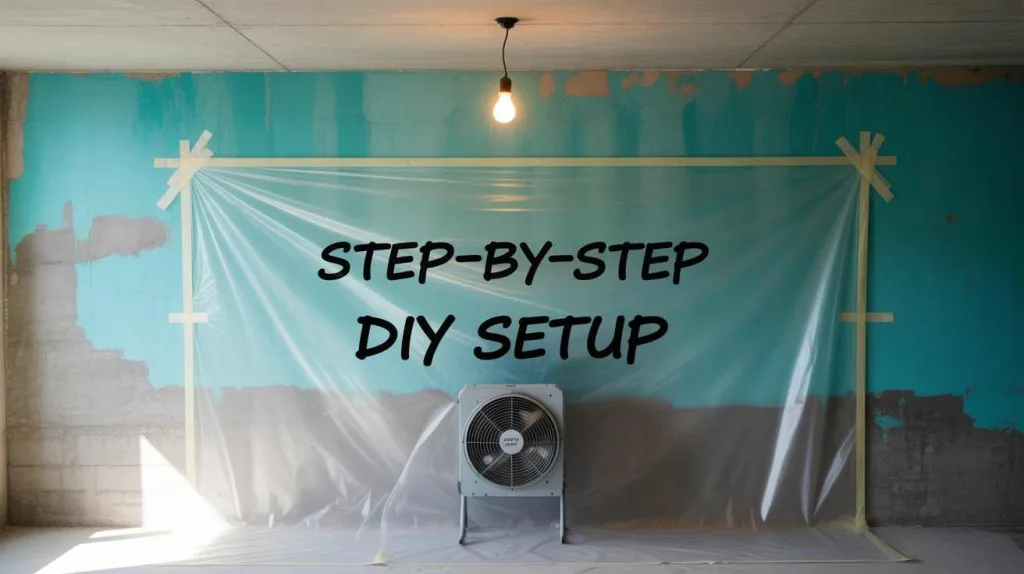
When to Hire Blasting, Dry Ice, or Laser Services
Answer:
Hire a pro if the area is over 400 sq ft, has multiple layers, or if epoxy/urethane coatings cover outdoor concrete. Pro blasting, dry ice, or laser cleaning costs $3–$7 per sq ft but saves days of DIY labor.
Mechanical blasting has evolved far beyond sand. Today you’ll see:
- Dustless blasting: Combines water and abrasive, reducing dust clouds.
- Dry ice blasting: Pellets evaporate, leaving less cleanup.
- Laser cleaning: High upfront cost, but ideal for sensitive or historical structures.
Cost bands :
- Driveway (400 sq ft): $1,200–$2,400 for dustless blasting.
- Dry ice blasting: ~$4/sq ft.
- Laser: Still premium at ~$6–$7/sq ft but dropping.
Case study: A client in 2024 paid $1,600 for dustless blasting a driveway that three DIY weekends failed to clean. The job was finished in a single morning, with no sludge disposal headaches.
Related: For exact room-by-room breakdowns, see our Interior Painting Cost Guide.
Vinegar, Baking Soda, Bleach, WD-40: Which (If Any) Work?
Answer: Vinegar may soften fresh latex paint, baking soda is best as a neutralizer, and bleach or WD-40 don’t truly remove paint from concrete.
We’ve lost count of the times we’ve heard, “Just use vinegar and a wire brush—it’ll lift right off.” Reality check: it rarely does.
Vinegar
- Works only on fresh latex or acrylic.
- Needs mechanical help (scraping or brushing).
- Safe, eco-friendly, but limited power.
Baking Soda
- Doesn’t remove paint directly.
- Excellent for neutralizing acid-based strippers afterward.
- Can help lighten stains when mixed with water into a paste.
Bleach
- Not a paint remover.
- May lighten discoloration but won’t break paint bonds.
- Useful for mold/mildew, not coatings.
WD-40
- Removes grease, tar, and adhesives better than paint.
- Leaves an oily residue you’ll have to clean anyway.
Case study: A neighbor tried WD-40 on a red spray-paint tag on his driveway. It smeared, stained deeper, and took twice as long to clear with proper methods.
Verdict: Don’t waste weekends on these unless you’re testing tiny spots. If the stain doesn’t shift in 10 minutes, escalate.
Steam Cleaners on Concrete — Worth Trying?
Answer: Steam can help on sealed surfaces with thin latex, but it’s not reliable for porous or outdoor concrete.
Steam sounds appealing—chemical-free, powerful heat, easy cleanup. The catch? Consumer steam cleaners don’t reach the pressure needed. Commercial masonry steamers can soften paint, but they’re expensive and rarely available for rent.
We also used a 1,500W steamer to test for overspray in our basement. After 15 minutes, we had a warm, damp patch… but the paint didn’t budge.
Verdict: Skip it. Put that rental budget toward a pressure washer instead.
What Will This Cost (DIY vs Pro)?
Answer: DIY removal can cost as little as $40–$150 for supplies, while pro blasting or laser cleaning ranges $3–$7 per square foot.
Here’s a realistic breakdown:
| Method | DIY Cost | Time Estimate | Pro Cost | Best Use Case |
|---|---|---|---|---|
| Soap + scraper | $20–$40 | 30–60 min small spots | — | Fresh latex spills |
| Gel stripper | $25–$40 per gal (covers 40–50 sq ft) | 2–4 hrs | — | Latex, oil, older coatings |
| Krud Kutter/Lift Off | $10–$15 | 10–20 min spots | — | Spray paint, drips |
| Pressure washer rental | $60–$80/day | 2–4 hrs driveway | $150–$300 pro wash | Outdoor surfaces |
| Grinder rental + wheel | $40–$60/day + $30 wheel | 4–6 hrs garage | $800–$1,500 | Epoxy floors |
| Dustless blasting | — | — | $3–$5/sq ft | Large driveways/patios |
| Dry ice blasting | — | — | ~$4/sq ft | Sensitive surfaces |
| Laser cleaning | — | — | $6–$7/sq ft | Historic, delicate concrete |
Case study: One of our clients spent ~$120 (stripper, grinder rental, PPE) to clear a 2-car garage epoxy. A contractor quoted him $1,200. He saved big but spent an entire Saturday grinding. ROI depends on whether you value time or budget more.
Environmental & Cleanup
Answer: Always neutralize acids, dispose of sludge safely, and protect storm drains.
Concrete paint removal isn’t just messy—it can be environmentally risky.
- Neutralization: If you used acid-based products, flush with a baking soda solution (½ cup soda per gallon of water). This prevents the acid from etching further.
- Sludge disposal: Collect stripped paint and stripper residue in heavy-duty bags. Never wash it into drains—it may contain VOCs, lead, or heavy metals.
- Dust control: When grinding, use a HEPA vac attachment. Silica dust is a long-term health hazard.
Verdict: Budget time and supplies for cleanup. It’s part of the job, not an afterthought.
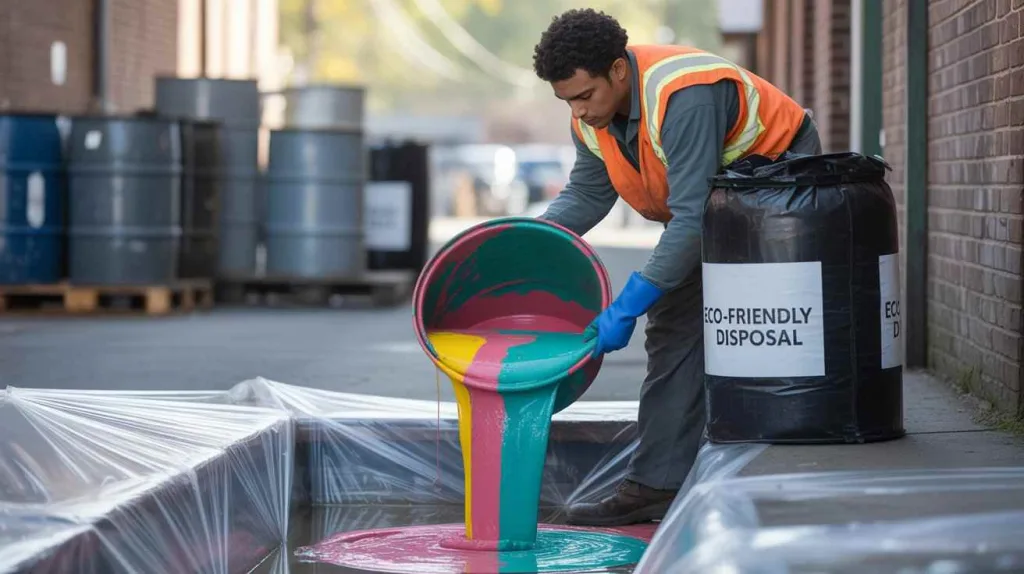
Why Didn’t the Paint Budge? (Root-Cause Tree)
Answer: If paint won’t lift, it’s usually the wrong chemical match, insufficient dwell time, dried stripper, or inadequate PSI.
Here are the most common failure points we’ve seen (and made):
- Wrong chemistry. Latex remover won’t touch epoxy.
- Too little dwell. Stripper needs time—60 minutes minimum, 2 hours better.
- Drying out. Stripper exposed to sun dries uselessly. Cover with plastic wrap.
- PSI mismatch. A 1,800 PSI washer cleans dirt, not paint. Aim for 2,700–3,000 PSI with a 15° or turbo nozzle.
- Sealed surface. If the concrete has a sealer, strippers may not penetrate until you scuff or grind first.
Case study: A client tried vinegar and baking soda for three weekends on an epoxy patio. Once we tested with acetone and realized it was epoxy, we switched to grinding. Job done in 4 hours.
Aftercare — Getting Concrete Ready to Recoat or Seal
Answer: Let concrete dry fully, test for moisture, patch damaged spots, and reseal before repainting.
Once paint is gone, your job isn’t finished. Bare concrete needs attention:
- Rinse thoroughly. Remove all stripper or dust residue.
- Dry time. Wait 24–48 hours before sealing or painting again.
- Moisture test. Tape a 12×12 inch plastic sheet to the surface. After 24 hrs, check for condensation. If damp, wait longer.
- Patch holes. Use concrete patch or resurfacer for gouges from grinding.
- Seal or prime. Apply a concrete sealer (penetrating silane/siloxane for outdoors, acrylic for indoors) before repainting.
Conclusion
Rent a pressure washer without the right nozzle, and you’ll etch your slab. But when you match paint type, method, and surface correctly, paint removal stops being a guessing game.
Here’s our advice in order of priority:
- Test the paint type before doing anything.
- Start small with spot removers if latex and fresh.
- Escalate quickly to gel strippers + pressure if that fails.
- Don’t hesitate to grind or blast for epoxy or large outdoor areas.
And here’s our prediction: as blasting tech improves (especially dry ice and laser), DIY vinegar hacks will fade into history. In 3–5 years, we’ll look back and wonder why we ever tried kitchen ingredients on something as tough as epoxy.
Next step: If you’re facing a small spill, try the latex-friendly removers first. For anything bigger, rent a pressure washer this weekend. If it’s epoxy? Book a grinder or call a blasting pro—you’ll thank yourself later.
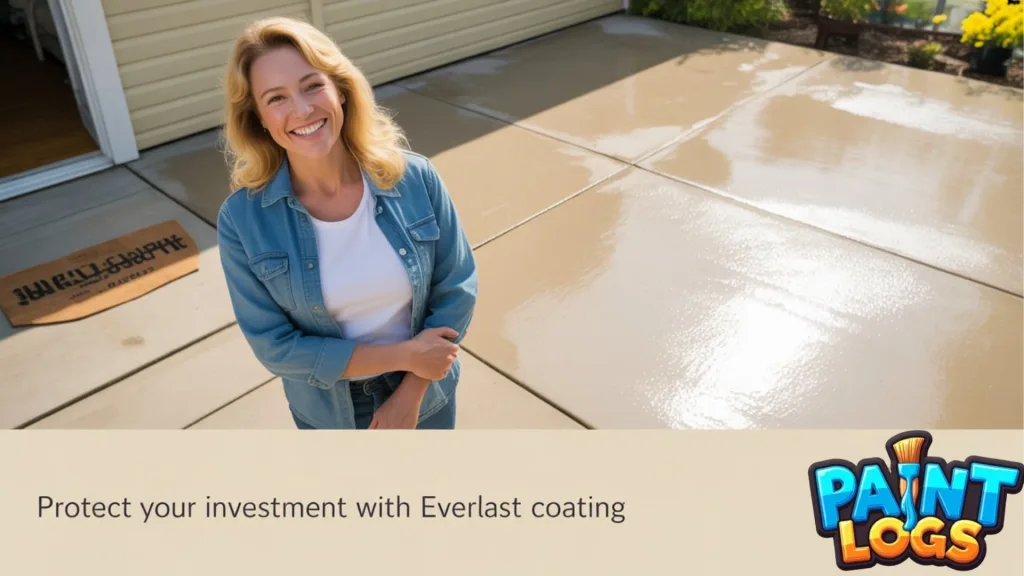
FAQs
Q1: How to remove paint from concrete without a grinder?
Use a gel stripper plus a pressure washer at 2,700–3,000 PSI. Scraping and repeat cycles usually clear latex and oil paints without grinding.
Q2: What’s the best way to remove epoxy from concrete?
Combine a heavy-duty stripper with a grinder and diamond cup wheel. For large jobs, hire dustless blasting.
Q3: Will acetone discolor concrete?
Yes, acetone may darken or leave temporary marks. Always test a small corner first.
Q4: What’s the safest method indoors?
Use low-odor strippers like Citristrip, ventilate with fans, and avoid flammable solvents.
Q5: What PSI removes paint without etching?
2,500–2,700 PSI with a 15° nozzle is strong enough for paint but safe for most slabs if kept 12 inches away.
Q6: Can vinegar remove old paint from concrete?
No, vinegar only softens fresh latex or acrylic paint. It won’t lift older or epoxy layers.
Q7: Does WD-40 remove spray paint from driveways?
Not effectively. It may smear but won’t fully remove. Use a stripper or pressure washer instead.
Q8: How do you clean up after chemical strippers?
Scrape residue into bags, neutralize acids with baking soda, and rinse thoroughly. Don’t let sludge enter drains.
Q9: How to remove paint from concrete clothes or cars?
To remove paint from clothes, use acetone or a stain remover immediately. For cars, use automotive-safe products—avoid pressure washers.
Q10: Is sandblasting still used for paint removal?
Yes, but dustless blasting or dry ice is safer and cleaner for residential use.
Q11: How long does it take to remove paint from a 2-car garage?
With stripper + grinding: 4–6 hours DIY. With blasting pros: 2–3 hours.
Q12: Do you need to reseal concrete after paint removal?
Yes, especially outdoors. Bare concrete is porous and vulnerable. Resealing extends life and prevents staining.

